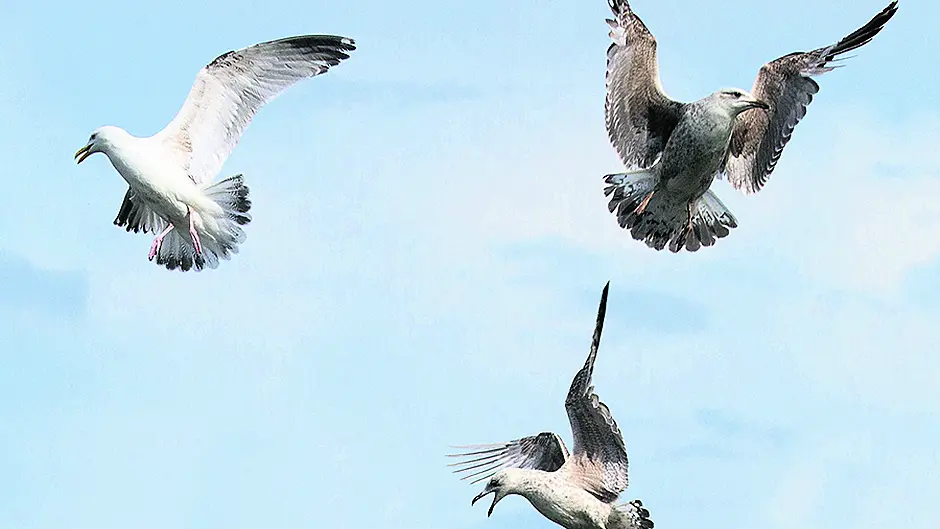Wildlife with an amateur observer
I’VE just spent a week in a mountain village in Andalucía where the highlight of each day was watching swifts swooping and screeching morning and evening over the narrow streets.
Some 20 years ago, when I first went to that village, there were thousands of them but, sad to say, their numbers have dramatically declined. However, the spectacle is still as magnificent as ever. Watching these acrobats whirling and hurling themselves through the air evokes pure joy and is a reminder of what an incredible feat such bird flight actually is.
Even the high technology used today in modern aircraft design cannot equal the extraordinary manoeuvrability of birds. Their brilliant wing designs, evolved over hundreds of thousands of years, are suited to their particular flying needs. Some require high manoeuvrability, others are of a more ‘general purpose’ design, while others need to glide and soar. Birds have an incredible variety of positions – not just of the wings and tail, but of the parts of the wings and even individual feathers – as Sharron’s accompanying photo of black-headed gulls clearly shows.
Families of birds have developed different kinds of flight to suit their life-style. There are many birds without a specialised form of flight. They have a ‘general purpose’ wing layout and many garden birds, such as the robin and greenfinch, fall into this category.
Flying techniques
Some general purpose flyers have developed other flying techniques to help them. Brent geese have the general-purpose wing layout but they improve their flight efficiency by the clever use of the V formation. The bird at the front creates turbulence behind it with the beating of its wings. This gives extra lift to the birds flying on either side behind it. The lead bird is generally an old and powerful female, but other birds can take turns as she tires too. However, the weaker individuals, including youngsters, remain in the arms of the V formation.
Another category of birds need high manoeuvrability and are equipped with a broad, round wing to enable this. For example, the wren can fly neatly amongst dense undergrowth and some game birds can take off suddenly because of their wing design.
Birds that specialise in ultra-efficient flight, such as the swift, have long, narrow primary feathers and a long and thin wing shape. The tail feathers of a swallow enables it to turn in the air and also aids its long migration.
Some birds are adapted for gliding – flying without flapping their wings – and these fall into two categories. One group uses wind power to glide over the sea while the other makes use of rising air currents to soar upwards.
Gliding birds have extremely long and narrow wings and most are ocean-going birds such as the fulmar, gannet and Manx shearwater, that exploit the power of the wind to skim over the waves in flight.
Rowing with feathers
Soaring birds utilise air currents to fly, such as those above a ridge of hills or, in warm weather, rising air thermals. Their wingtips, rather than being pointed, are splayed like outstretched fingers, which helps to reduce turbulence. The birds flap slowly into the air in wide circles, but once they catch the rising air they soar effortlessly. The typical slow, circling, soaring climb of buzzards and ravens is an example of this.
All birds use their feathers to ‘row’ through the air. In the downward stroke of a bird’s flight, the feathers are held firmly together, to create as much push resistance as possible. On the upstroke, however, the feathers twist and open – like the vanes of a Venetian blind – to leave a slight space to allow air to go through. This reduces air resistance to the wings’ upstroke.
These amazing flight adaptations make birds the most successful class of vertebrate animals in the world today, with over 8,000 species of birds compared to some 4,000 species of mammals. However, many of them are under threat and our Irish swifts are in decline as much as the Andalucían population.
Bird Watch Ireland is looking for your help in a ‘citizen science’ project which seeks to identify swift populations in the towns of West Cork. The survey results will provide information on where swifts are nesting and therefore where nest boxes are required. To volunteer, contact Paul Hadland via email at [email protected] or call 087 468 2358.






